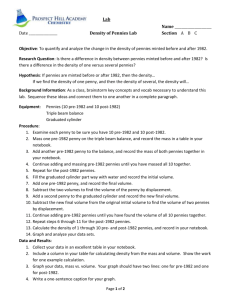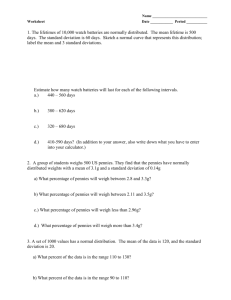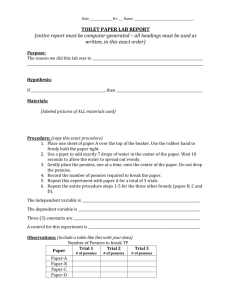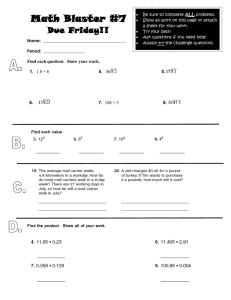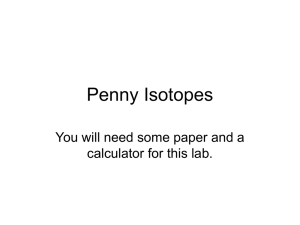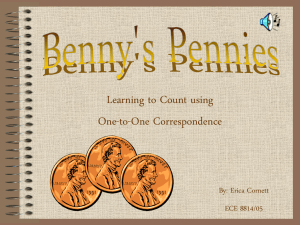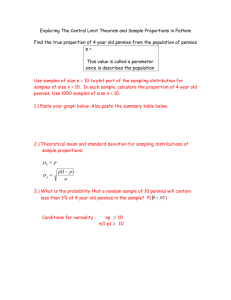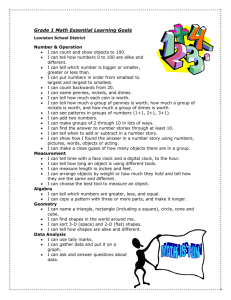Density Lab: Dating Pennies with Chemistry
advertisement
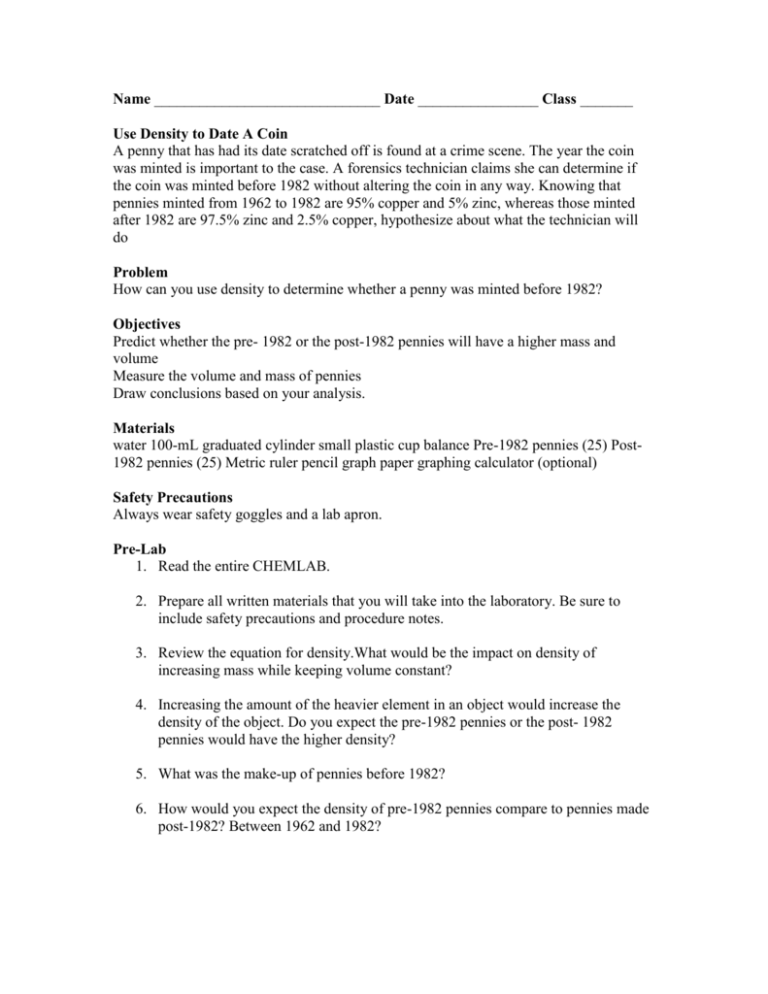
Name ______________________________ Date ________________ Class _______ Use Density to Date A Coin A penny that has had its date scratched off is found at a crime scene. The year the coin was minted is important to the case. A forensics technician claims she can determine if the coin was minted before 1982 without altering the coin in any way. Knowing that pennies minted from 1962 to 1982 are 95% copper and 5% zinc, whereas those minted after 1982 are 97.5% zinc and 2.5% copper, hypothesize about what the technician will do Problem How can you use density to determine whether a penny was minted before 1982? Objectives Predict whether the pre- 1982 or the post-1982 pennies will have a higher mass and volume Measure the volume and mass of pennies Draw conclusions based on your analysis. Materials water 100-mL graduated cylinder small plastic cup balance Pre-1982 pennies (25) Post1982 pennies (25) Metric ruler pencil graph paper graphing calculator (optional) Safety Precautions Always wear safety goggles and a lab apron. Pre-Lab 1. Read the entire CHEMLAB. 2. Prepare all written materials that you will take into the laboratory. Be sure to include safety precautions and procedure notes. 3. Review the equation for density.What would be the impact on density of increasing mass while keeping volume constant? 4. Increasing the amount of the heavier element in an object would increase the density of the object. Do you expect the pre-1982 pennies or the post- 1982 pennies would have the higher density? 5. What was the make-up of pennies before 1982? 6. How would you expect the density of pre-1982 pennies compare to pennies made post-1982? Between 1962 and 1982? 7. Large objects cannot be placed in water to determine their volume. Determine a procedure that could be used to calculate the density of such an object. 8. Review the equation to calculate percent error. Procedure 1. Read and complete the lab safety form. 2. Record all measurements in your data table. 3. Measure the mass of the plastic cup. 4. Pour about 50-mL of water into the graduated cylinder. Record the actual volume. 5. Add 5 pre-1982 pennies to the cup, and measure the mass again. 6. Add the 5 pennies to the graduated cylinder, and read the volume. 7. Repeat steps 5 and 6 four times. After five trials there will be 25 pennies in the graduated cylinder. 8. Cleanup and Disposal Pour the water from the graduated cylinder down the drain, being careful not to lose any of the pennies. Dry the pennies with a paper towel. 9. Repeat steps 3 through 7, using post-1982 pennies. Data Table for the Density of a Penny Pre 1982 Trial Total Total Mass Total Volume Number of Of Pennies Of Water Pennies (g) Displaced (mL) 1 5 2 10 3 15 4 20 5 25 Data Table for the Density of a Penny Post 1982 Trial Total Total Mass Total Volume Number of Of Pennies Of Water Pennies (g) Displaced (mL) 1 5 2 10 3 15 4 20 5 25 Analyze and Conclude 1. Calculate Complete the data table by calculating the total mass and the total volume of water displaced for each trial. 2. Make and Use Graphs Graph total mass verses total volume for the pre-1982 and post- 1982 pennies. Plot and label two lines on the graph, one for pre-1982 pennies and one for post-1982 pennies. 3. Make and Use Graphs Draw a best-fit line through each set of points. Use two points on each line to calculate the slope. 4. Infer Examine the units for the slopes of the lines. Verifying the slopes of the lines give you the density of the pre-1982 pennies and density of the post-1982 pennies. 5. Apply Can you determine if a penny was minted before or after 1982 if you know only its mass? Explain how the relationship among volume, mass, and density support using a mass-only identification technique. 6. Error Analysis Determine the percent error in the density of each coin. Inquiry Extension Compare your results with those from the rest of the class. Are they consistent? If not, explain how you could refine your investigation to ensure more accurate results. Calculate a class average density of the pre-1982 pennies and the density of the post-1982 pennies. Determine the percent error of each average. Chemistry: Matter and Change • Chapter 2
